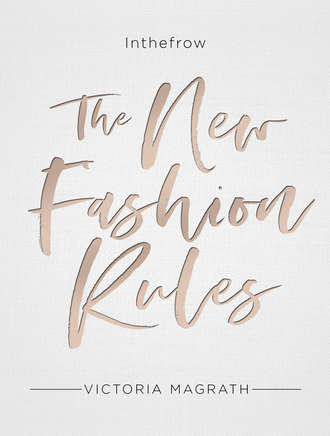
Полная версия
The New Fashion Rules: Inthefrow
I’d also add some of my favourite homeware and lifestyle stores: Urban Outfitters, Zara Home, Made, Oliver Bonas, Anthropologie and & Other Stories.
And because no shopping can be done without refreshment, I’d add Veggie Pret, Pizza East, Farmacy (my favourite Vegan restaurant in Notting Hill), the Burberry Thomas’s cafe, Joe & the Juice, Roka for amazing Japanese food and Australasia (my favourite Manchester restaurant), which again cooks up incredible Japanese cuisine.
Throw in the Plaza Athénée hotel and I would never leave this place.
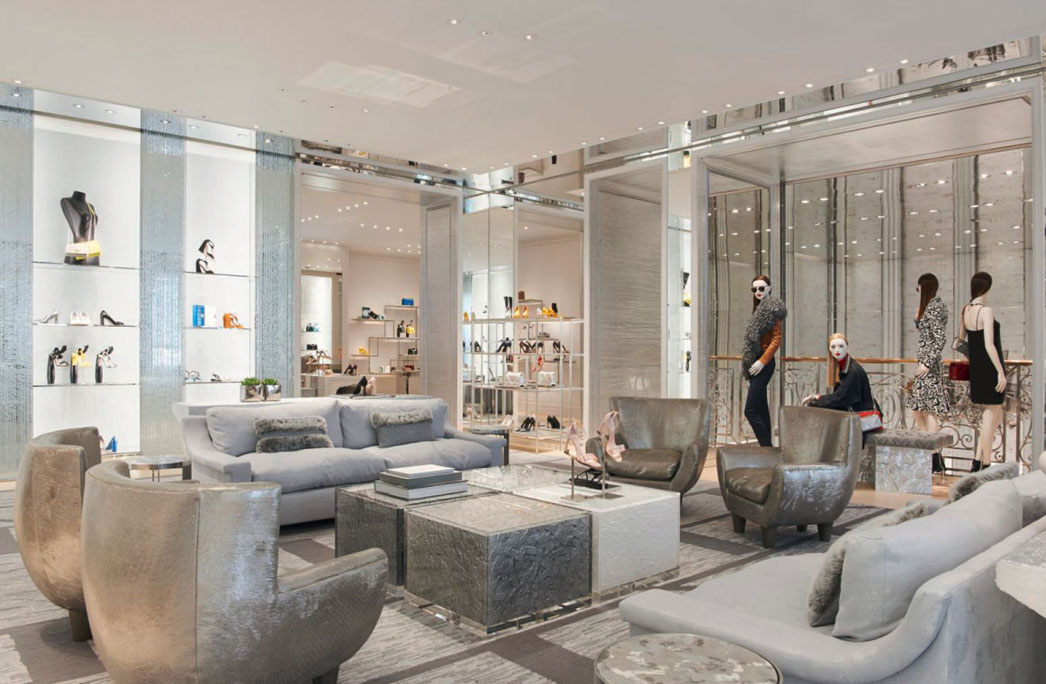
(@inthefrow)
2
June 2000
ASOS changes the online shopping game
Kate Moss is photographed exiting a hotel in a beautiful black leather jacket in the year 2000. She looks amazing, but the jacket she’s wearing is the star of the show. Where can you buy it, and more importantly, where you can buy an affordable alternative that looks just as great? And that cute top that Jennifer Aniston is wearing in the latest episode of Friends, season seven. I want it, but I have no idea where to find it and neither do the other 10,000 women who saw the show and also fell in love with it. So sparks the ingenious idea, by Nick Robertson, to create a portal for items As-Seen-On-Screen, and ASOS is launched for every fashion-conscious person in the land. Here you could find and buy fashion alternatives to dress like your favourite star. A commercial idea for a celebrity-adoring population. It was one of the savviest ideas in the history of fashion.
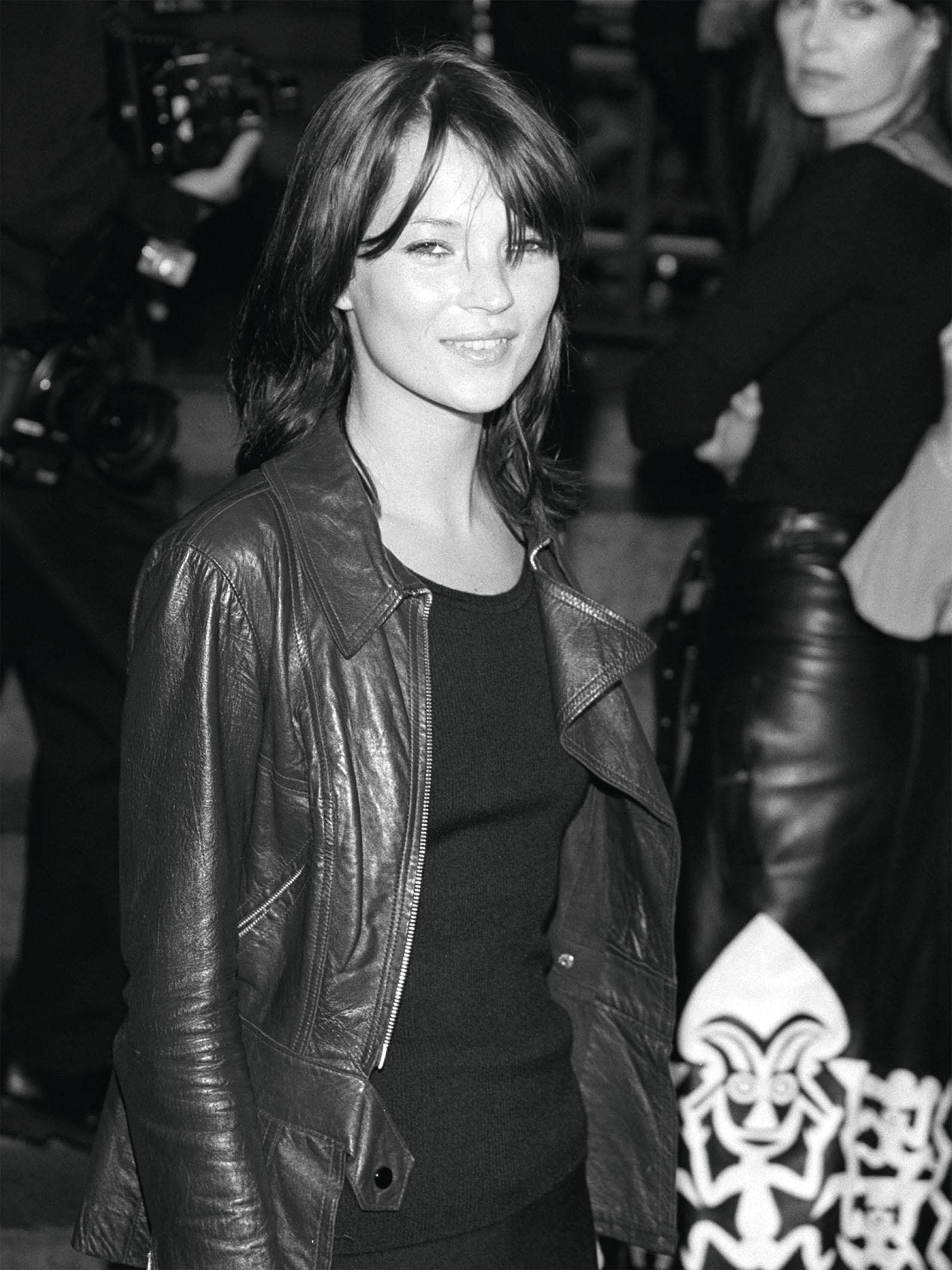
Kate Moss (Steve Azzara/Corbis via Getty Images)
No other retailer had capitalised on the celebrity-outfit-dupes concept and culture in such an easy and affordable way. And by doing so, ASOS built up a loyal audience who would stick with them when they adapted their strategy to a dynamic fashion retail space.
That was in the year 2000. Sixteen years later, after a number of changes to their strategy, ASOS made £1,403.7 million in retail sales. In 2017, they were the biggest online-only (pure-play) retailer by sales in the world. ASOS were pioneers in an open marketplace, driving new ideas and pushing the boundaries when it came to customer service and shopping experiences. They were forward thinking with their delivery and returns processes (they’re the only fashion retailer to offer a year’s unlimited next-day delivery for £9.95 regardless of how much you spend), inspirational with their editorial, blog and social content and ingenious with their product-display techniques. I remember when I first stumbled onto ASOS back at university and ten years later, I’m still just as obsessed. I used to have asos.com as my browser’s homepage, just so that I could check the ‘new in’ section every single day before I even went to Google. The concierge in my building knew me personally because I would check for new parcels every day, and my flatmates almost had to hold an intervention. Okay, I’m exaggerating a little, but I was definitely mocked repeatedly for how many times a week I would place an order.
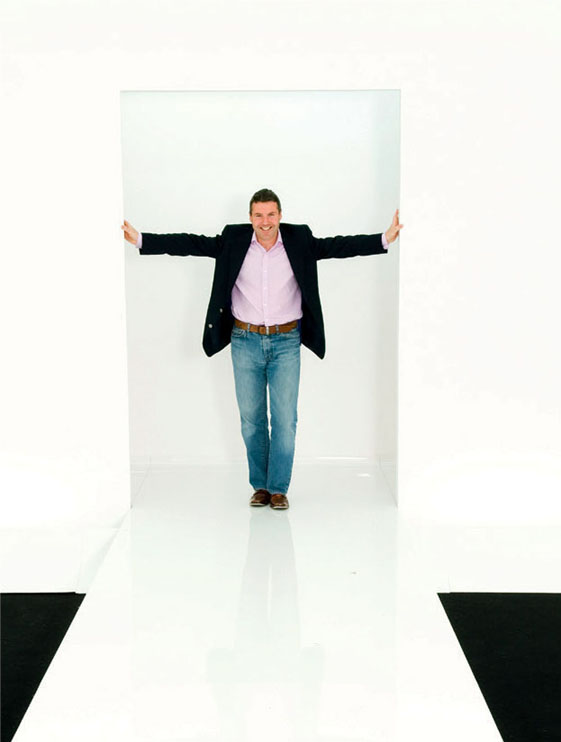
Nick Robertson (Andisheh Eslamboli/REX/Shutterstock)
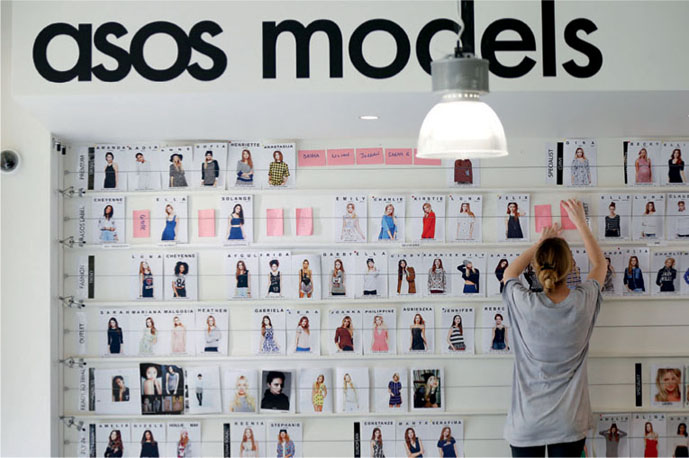
(REUTERS/Suzanne Plunkett)
Free deliveries and returns, catwalks for every product, style advice, sizing help and one of the biggest catalogues of products on the Internet. There are 4,000 new styles per week! But unlike many online retailers who stock alternative brands, ASOS stocks 44 per cent of its own product too, with 66 per cent of styles being unique to the company. They sell 850 brands and have warehouses in the UK, US and Europe, meaning they can ship to you wherever you are in the world – and that’s within a matter of days.
Not charging for returns or delivery was fundamental to the increase in customer acceptance. More people started to use and trust ASOS and this led to more trust in online shopping, encouraging more shoppers to become online purchasers. So the online selling space has a lot to thank ASOS for. It has thrived in its wake and the fashion retail space has never been the same since its launch. Thus, ASOS is definitely one of the biggest retail game-changers of the 21st century.
Reasons I love to shop online
1. Free returns – buy both sizes just in case and send back the one that doesn’t fit.
2. You never need to leave your house – pyjamas and a coffee in bed, scrolling through a website, is far more relaxing for me than pushing my way through Oxford Street on a Saturday afternoon.
3. Everything is under one roof – if you physically shopped through the rails of every store you can find on ASOS, Net-A-Porter or even Selfridges online, it would take you hours to walk from door to door and shop to shop. Don’t get me wrong, I do love to physically shop too, when I’m in the mood, but I’m a converted online shopper through and through.
4. Style advice and ideas – that shirt that you love in the store, it doesn’t come with any style advice unless you saw it on a mannequin. Online, the retailer’s stylist and merchandisers will have styled it up for you, and hopefully provided links to every other product you can see the model wearing.
3
June 2000
Net-A-Porter rides the dotcom boom
Natalie Massenet hit the launch button on her revolutionary new idea. What if the population would like to buy luxury fashion online, from a curated selection of the best premium items in the market? Everyone in the industry had advised her against it. After all, it was only six years since the first item ever was sold online, and for Natalie, everything was riding on this idea being a success. What if no one wanted to spend thousands of pounds on handbags they had never seen in person? And what if the consumer wanted to go into the store to spend their hard-earned salary, rather than trusting an online website? Those questions among hundreds more could have halted Natalie in her tracks and stopped her from publishing the magazine-style shopping website for designer fashion, Net-A-Porter. She could have lost everything from investing in an idea that may have immediately flopped. But who knew that this venture would lead to 9.5 million orders made in 2017? Without a physical store to show off the products, or a changing room for customers to try them on, selling luxury fashion to an online consumer was risky business. But her gut instinct paid off, and Net-A-Porter is now one of the top 50 online-only retailers in the world. Luxury fashion was online and here to stay.

Natalie Massenet (Matthew Lloyd/Bloomberg via Getty Images)
Net-A-Porter started a trend. It showed the luxury world what could be done and how it could be a success. In its wake, the majority of luxury brands around the world began developing their own online stores. And it wasn’t just brands that followed – many companies were also looking to follow in Natalie’s footsteps. Mytheresa went online in 2006, Matches Fashion and Farfetch in 2007, Selfridges developed their e-commerce site in 2010 and Monnier Frères in 2011.
Luckily for other entrepreneurs with big ideas, there have been a number of success stories similar to Net-A-Porter. Pure-play retailers have a great advantage in terms of reduced costs on logistics and physical-store overheads, but they also benefit from their exclusivity. Miss it once and it’s gone forever. Thus, there are now a multitude of hugely successful, online-only retailers.
My favourite online success stories
Black Milk Clothing
Black Milk Clothing launched in 2009 selling colourful, unique leggings to the Australian consumer, swiftly becoming global and building a cult-like following. What started in the founders’ kitchen turned into a multi-million-dollar brand with millions of followers and a tribe of loyal customers. And they did it all with zero advertising budget. Word of mouth was all they needed; that, and a global distribution network, a product that was unique in the market and a cool social-media strategy.
Boohoo and Missguided
Boohoo and Missguided are further success stories from the North of England, both developing into huge online retailers with 2.5 million-plus Instagram followers and a foot firmly placed in the high-street retail market. It’s not surprising that in 2016 Missguided made £206 million in profits, while Boohoo made £294 million. And luckily for Boohoo, with such staggering profits they were also able to acquire the huge, yet recently bankrupt, American fashion brand Nasty Gal for £20 million.
Revolve Clothing
Revolve Clothing launched in 2003 in the hope of inspiring women with their youthful, Coachella-vibe clothing. Something fresh in a stale market. The brand exploded over the following years, creating an image that isn’t in any way replicable. They had a unique vision, took early advantage of the growing influence of bloggers and instagrammers (content-creators) and invested time in girls who would become unofficial ambassadors of the brand. Being part of the Revolve ‘family’ is cool and idolised, as their strategy involves lavish trips to the Hamptons, Mexico and the Turks and Caicos islands, and, of course, holding their own festival at Coachella. I can vouch for the trips being just as incredible as they look on social media. They set their goals and didn’t let up.
Triangl bikinis
Triangl bikinis started in 2012 and now turns over $45 million annually. It succeeded in a relatively unexplored marketplace with beautiful and affordable swimwear that broke the mould. And luckily, it garnered the attention of the likes of Miley Cyrus and Kendall Jenner, leading to a push in sales and a widespread frenzy to buy into the cool Australian brand. It now has over 2.8 million Instagram followers and is one of the most distinguishable swimwear brands in the world.
4
April 2001
Luxury for the masses
Whether or not you like to buy your new designer handbag from a boutique, you technically no longer have to. Chanel is one of the only stores to hold out entirely when it comes to selling anything online, and the company apparently doesn’t have any plans to change that any time soon. But every other brand, from Aquazzura to Zuhair Murad, stocks most, if not all, of their latest collections somewhere online. The iconic French luxury house of Hermès was surprisingly ahead of the market in April 2001 when they became one of the first luxury brands to launch their own e-commerce site. While back then it was perfumes and small leather goods that you could grab online, after a website refresh and a new strategy in 2017, the heritage brand now stocks almost everything that you can buy in their boutiques – apart from the famous Birkin and Kelly bags, which they will happily help you fall in love with instore.
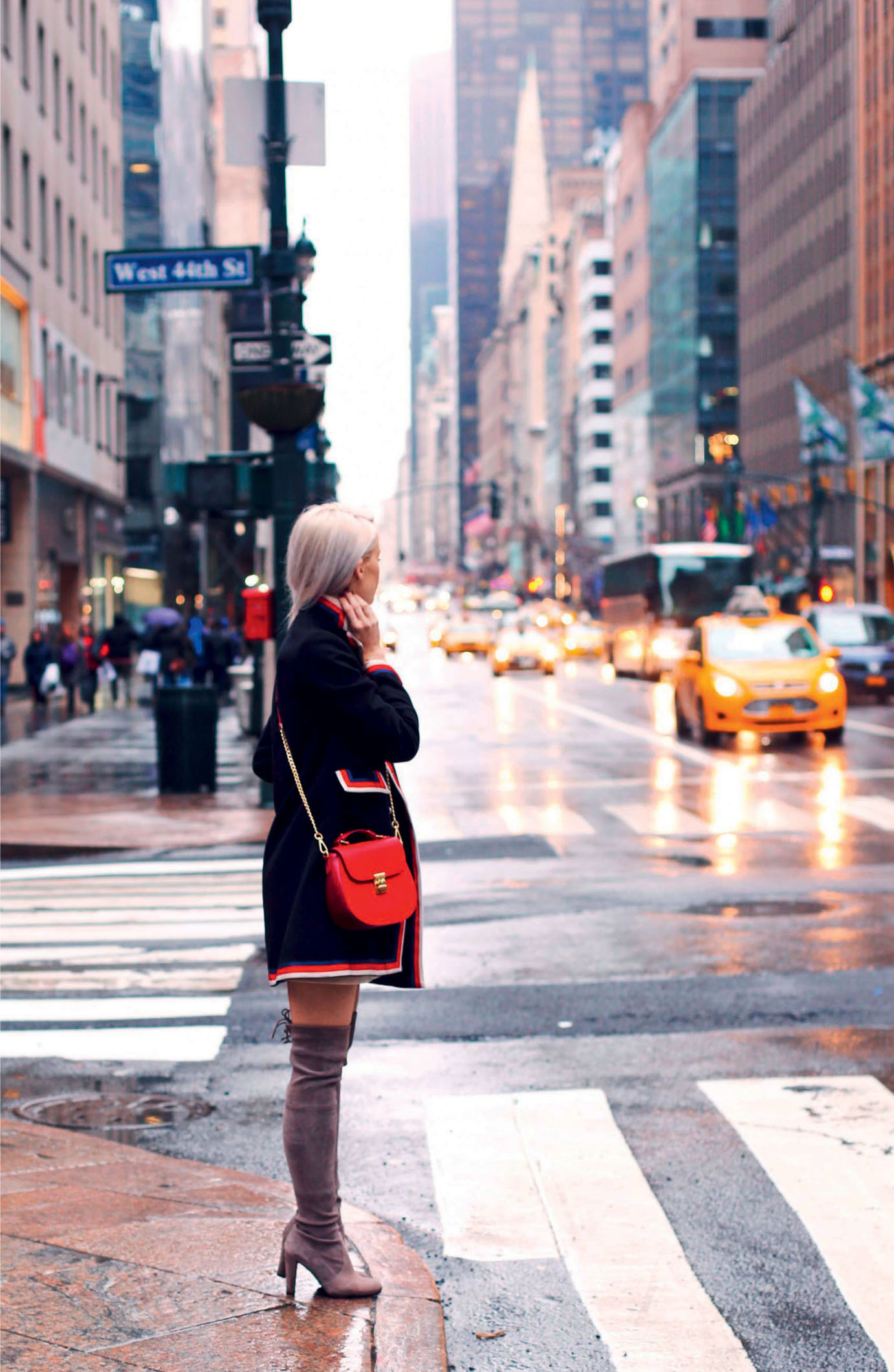
(@harrison)
I understand why some may prefer to purchase their latest luxuries online. Shopping in designer stores can often be an intimidating experience. Even when I know I have money to spend, there are times when the eyes of the security guard(s), shop assistants and store manager just feel like they’re burning through your not-brushed-this-morning hair. When I was at university, my friends and I would feel out of place going into the Manchester Selfridges store, because we were students and didn’t have Gucci hanging off our arms.
It’s a big factor for a lot of people. Have you ever felt put off buying an item of clothing or an accessory from a store, because you were on your own and didn’t want to venture inside for fear of feeling uncomfortable? I’m sure there would be a show of hands. So many times, my other half, Alex, and I have wandered around luxury houses that I was intending to buy from, and a security guard has followed us because Alex – covered in tattoos, no hair and often in a band T-shirt – doesn’t look like a typical designer-brand wearer. Stereotyping at its best.
While Hermès was an early online adopter, the majority of luxury houses only started to move online in around 2012, ultimately making luxury fashion easier to access. A reason, I think, why so many were staying offline as long as they could. Accessibility often equals affordability, and that’s not what these stores were selling. Luxury items are supposed to come with an experience, an expectation and a high-quality display. How could the audience obtain those things via an image on a website? But the audience wanted it, and the retailers knew they needed to keep up with the consumer’s demand to shop anywhere and at any time.
The service from the majority of these sites is impeccable. I’ve bought online from Gucci, Dior, Max Mara, Stuart Weitzman and Self-Portrait and my purchases have all been perfectly wrapped and delivered for that perfect luxury, at-home experience. No shopping assistants or awkward glances included.
I adore shopping in luxury boutiques – Dior on Bond Street in London is my favourite store in the world. The interiors, the staff and the layout are just wonderful. But luxury buying has increased dramatically in the past six years or so due to the availability and ease with which you can purchase a pair of £600 shoes and have them delivered to your doorstep. And we will undoubtedly reach a point where everything, even that Hermès Birkin, can be customised, personalised and ordered from your couch at home.
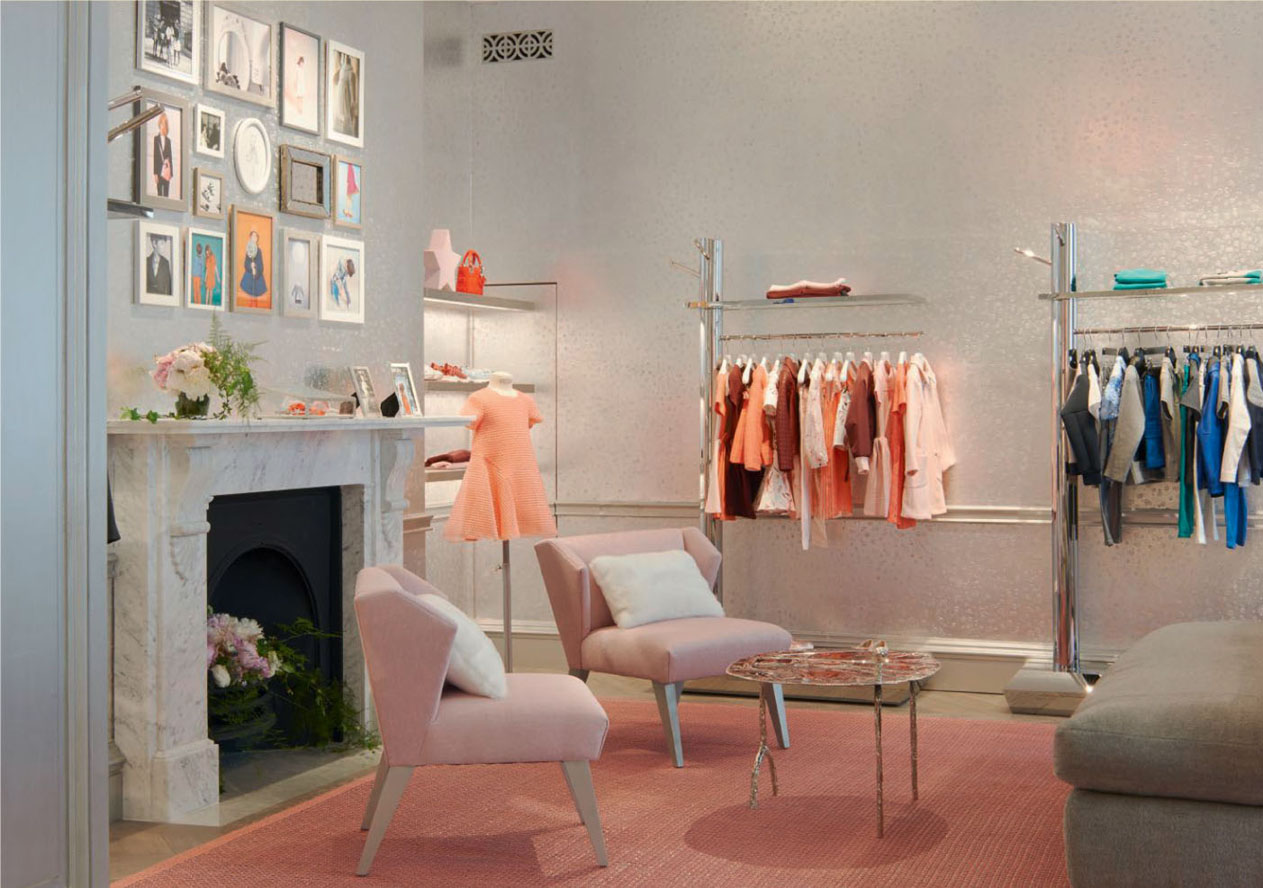
(@inthefrow)
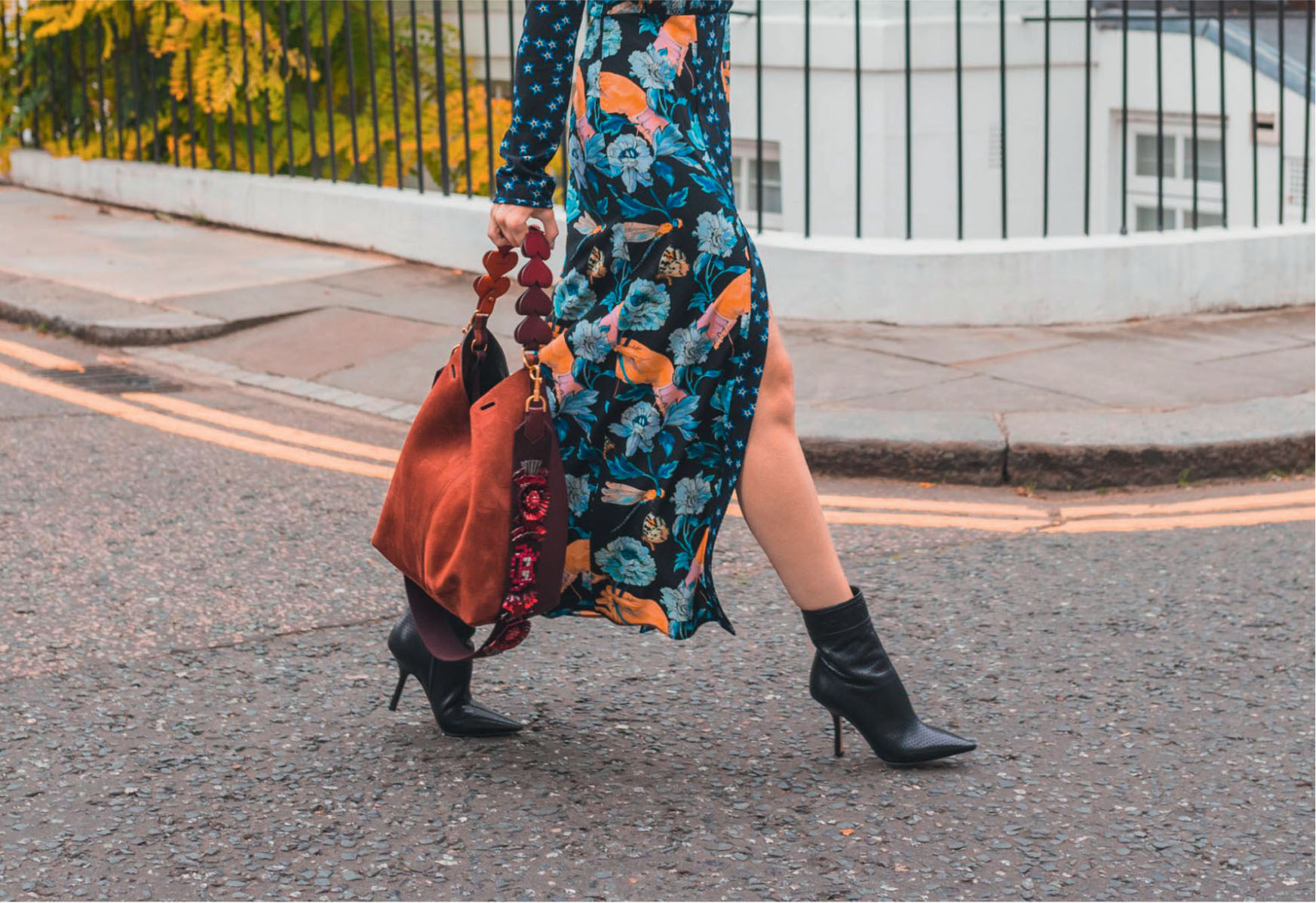
(@harrison)
Luxury shopping FAQs
As a blogger with a lust for luxury fashion and beauty, I often get asked about tips for buying and wearing designer accessories and clothing. So this is what I often reply to the top three FAQs:
How should I mix luxury and high street?
Buying an entire wardrobe of designer is not at all necessary. Great, if you have the disposable income, but not possible for probably 95 per cent of the world. Plus, you’ll be forever worrying about how best to wash everything you wear. Who has time for that when you just want to throw a white wash in the machine? My favourite way to wear designer clothing is to buy items that you know you will use extensively, that won’t need washing every time you wear them and can really enhance your look. For me, this includes bags, shoes and outerwear. The perfect dress I’d add in here too. So blend in your high street pieces: an amazing pair of trousers from ASOS, Topshop or All Saints, throw on a beautiful blouse from Reiss or Whistles and then layer over your new luxury jacket, add that designer bag to your arm and slip into those new designer heels. It’s my favourite way to enhance my whole look.
What is it worth spending your money on if you can only afford one luxury item?
If you’re looking to buy your first designer item, opt for a bag. It’s something you can wear every day, and if you choose the right colour, it will go with everything you own. I would usually suggest a robust, textured leather, black luxury handbag for the first item you invest in, as you can’t go wrong. It won’t pick up dirt easily, it won’t scratch significantly, it will match all of your outfits and you can wear it in any season. Either that or a navy or tan, depending on the colour tones you often wear.
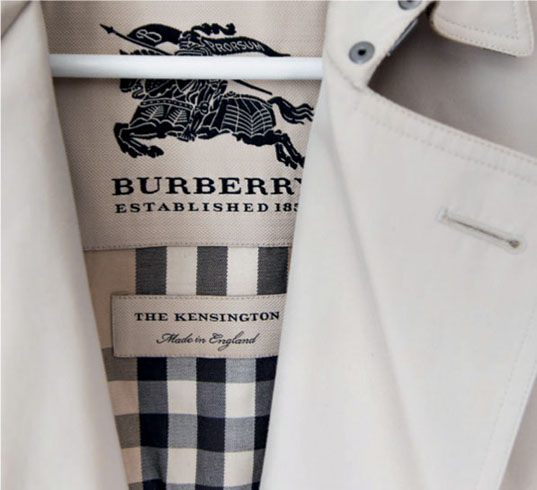
(@inthefrow)
If you’re not a bag person, go for a pair of shoes. A pair that is appropriate for a lot of weather conditions and won’t ruin in the rain if you’re caught out without an umbrella. So stay away from suede and choose something in a slightly darker colour if you’re spending a lot of money. But if neither shoes nor bags are your thing then I’d suggest a coat. That coat you’ll always wear and get so much use out of. I have a navy Gucci wool coat that I couldn’t be without and it’s seen me through a number of seasons. I also own a few Balmain blazers, including a beautiful white tweed, which add a confident vibe to any outfit and go with pretty much anything in my wardrobe. And then I have a Burberry trench coat that works well in any weather. They’re bigger investments, but you’ll keep them in your collection forever, and probably hand them down later.
What’s your favourite luxury item you’ve ever bought?
This is a difficult question to answer, as I have only regretted one or two items I’ve ever bought. I have a Max Mara camel coat that has become a wardrobe staple. When I was younger, I would always look up to the women I saw strutting around in the most sophisticated camel coats, belted at the waist with the collar popped, and I dreamed of a day when I would own one. When that day came and I walked away with the coat of my dreams, I’d never loved an item of clothing more in my life. In my opinion, everyone, male or female, should have a camel coat in their collection.
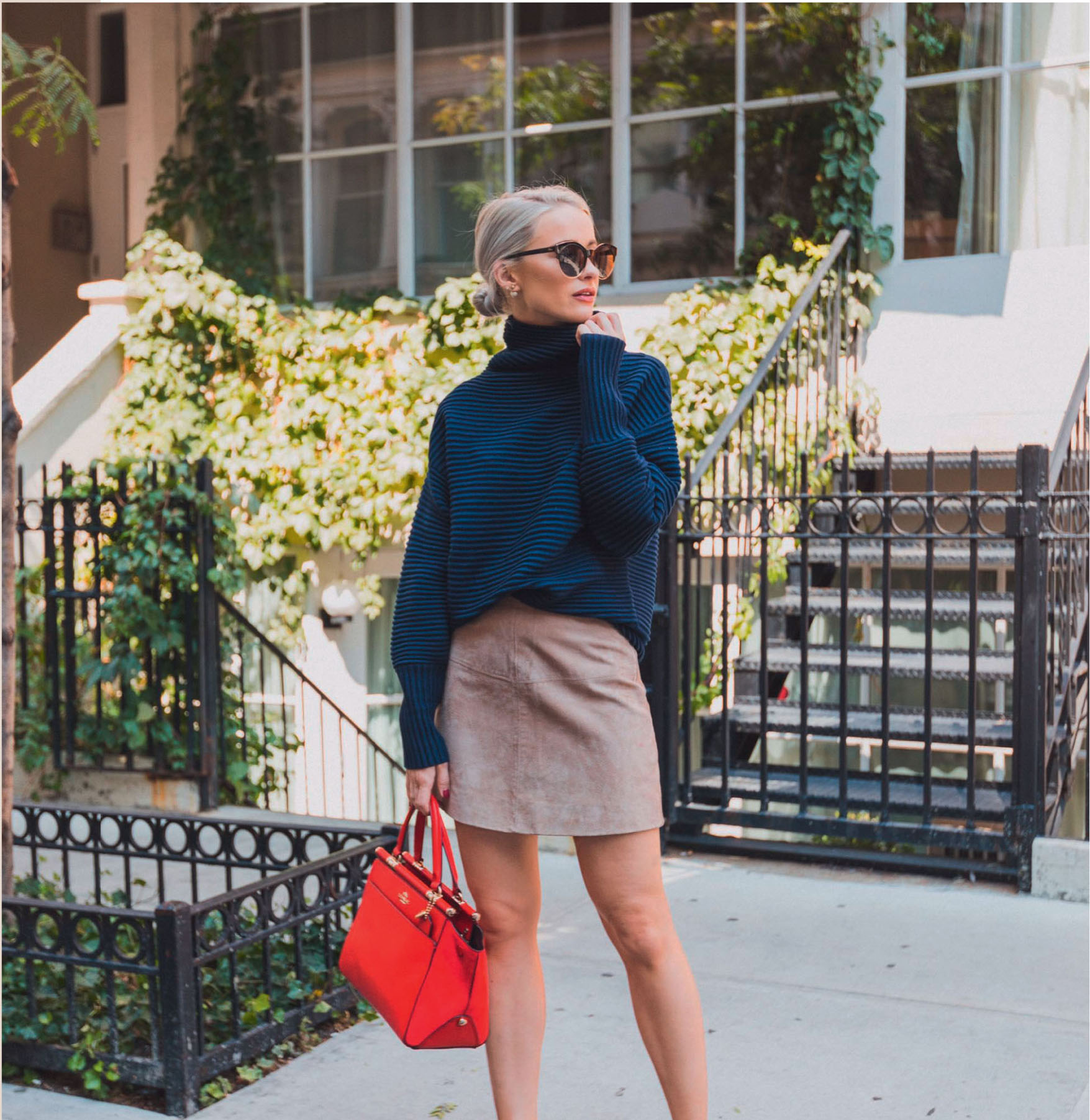
(@harrison)
5
June 2005
Global connections for the smallest brands
I have found so many incredible, independent brands on my various shopping binges. I often scan the new-in sections of my favourite online department stores to see what’s on their rails, and by doing so, I’ve spotted items I adore from brands I’ve never heard of. Net-A-Porter, LuisaViaRoma, Selfridges, Matches or Mytheresa; I’ll hold up my hands and say that I scour these sites weekly to search for items to fall in love with. I’ve found beautiful jewellery brands, cool sportswear collections, stunning accessories retailers and even the most established of brands that had somehow previously bypassed my radar. And I don’t think I’m alone here. Without these huge online stockists, a lot of brands wouldn’t be given the recognition they deserve. It’s hard to be acknowledged when the market is saturated with messages and you’re not able to shout loud enough. While these sites may take a sizeable cut from the product sales and awareness that they enable, that percentage is probably worth it for brands that otherwise would have to rely on their physical or online store for word of mouth.

(@rawpixel/Unsplash.com)
We’re living in a world of possibilities and opportunities. Anyone can open their own store if they have something worthwhile to sell. Etsy revolutionised the marketplace for individual retailers in June 2005 by providing online storefronts for creative people selling handmade items. I remember the day when my step-dad decided he wanted to pursue a career in woodwork, and suddenly the house was filled with his creations; a beautiful coffee table, a kitchen worktop, shelving units, jewellery boxes, you name it. So I mentioned that he should start an Etsy store. A few years later and he’s managed to create and run a successful small business, all from our back-garden work shed.
It’s no longer just the largest of companies that are able to thrive. Social media has been a starting point for a number of upcoming brands to grow their business. Just look at Fashionnova and their rise to viral fame after countless social stars were paid to promote their clothing. They now have 12 million Instagram followers and a huge customer base. Whatever the strategy, as long as your product is good and your customers can find you, you’ve got the world at your feet.
Brands I fell in love with online
RIXO
RIXO was founded in 2015 by two London College of Fashion alumni with a love of vintage fashion. Their designs are so recognisable and desired all over the world, and again stocked at Net-A-Porter, which is where I stumbled upon their dresses. The prints and luxurious silks are always impeccable and it’s clear they are destined for amazing heights.
Saskia Diez
Saskia Diez is a German jewellery designer who opened her own online store in 2009, but who I personally found on Net-A-Porter in 2017. It is seldom that I buy items from brands that I don’t know much about, but I immediately fell in love with the delicacy of her creations and had added a pair of droplet earrings to my basket and checked out within five minutes. I’ve been hooked on her designs ever since.
Strathberry
Strathberry is a Scottish brand that is taking on the global accessories market. I personally met the owner in 2014 at a press day for new brands and their designs blew me away. But without this chance meeting, the Internet would have been my first introduction, as they were initially based purely online. They are now sold at Selfridges, Saks and Monnier Frères, inevitably opening them up to much wider audiences around the world. I followed their journey after our first meeting, as they followed mine, and we continued to chat and collaborate over the years since. With Meghan Markle becoming an avid fan of their bags, it catapulted the brand even further into the headlines and their bags sold out overnight. At the start of 2018, I launched my own collaboration line of bags and accessories with them, which again sold out overnight, much to my extreme elation. They’re bound to grow and grow, and I can’t wait to see all of their successes.
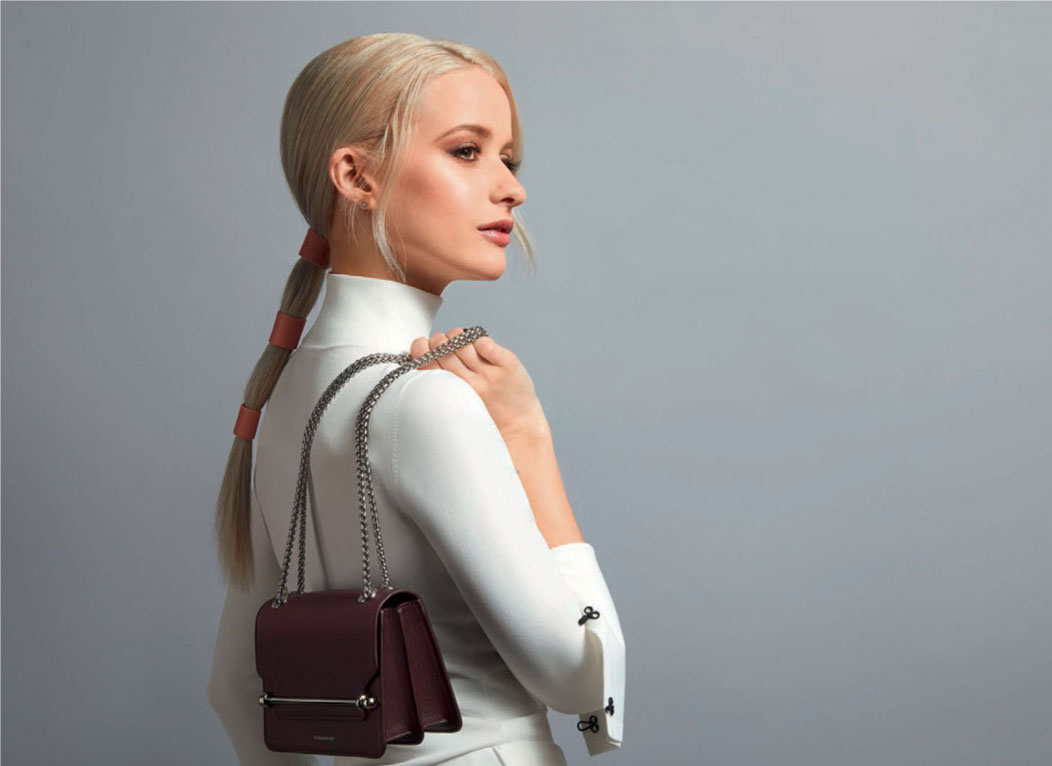
(Strathberry Collaboration Imagery)
6
April 2008
Inspiring a love of fashion
Five years ago, my other half didn’t own one luxury branded item of clothing. My accessories wardrobe is filled with a number of my favourite brands that I’ve collected over the years, from Dior to Chanel and Valentino, but my other half just wasn’t bothered. He wore his beaten-up Levi’s, Vans trainers and assortment of band T-shirts, and that was as far as his brand affiliations went. Which of course is absolutely fine; he rocked his style and it suited him. No one needs to own designer clothes if they’re not interested. But over the last couple of years I’ve noticed him becoming more interested in certain brands and trying new fashion styles. We all adapt our styles as we mature, but if you ask me, or him for that matter, it’s all down to the brands and clothing he’s seeing on his (or my) Instagram feed. He’s exposed to so many more styling ideas: those cool new trainers that just launched, that awesome logo-heavy hoodie, that new backpack. Fashion inspiration is everywhere – we cannot escape it.
Lookbook.nu was one of the first accounts I signed up to when I started blogging. It launched in April 2008 as a place to share a photo of your outfit, with a description of the items you’re wearing, and then other users can like it and comment. This platform is all about the love – no negativity or thumbs down are allowed, because what purpose does that serve? Lookbook was huge in its heyday, inspiring outfit ideas and serving as an image-based blog of sorts. That’s before hundreds of thousands of people started their own blogs to post their outfit shots on instead.




